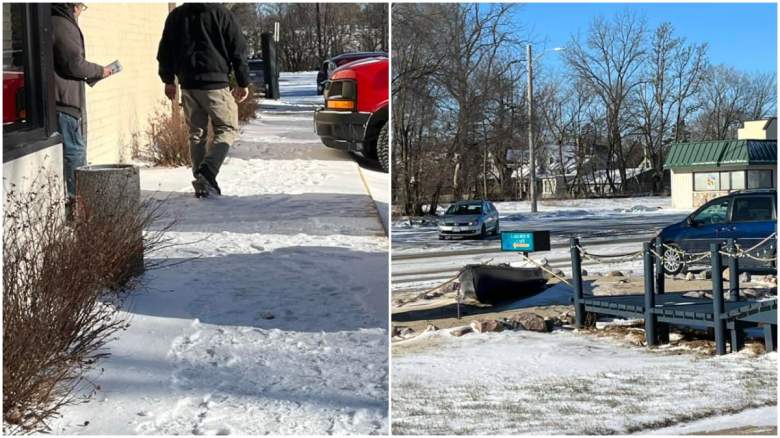
People throughout southeastern and other parts of Wisconsin received an emergency alert to their phones on the evening of February 18, 2022, warning them of an imminent snow squall.
What’s a snow squall? What’s the meaning of the alert?
According to Channel 3000, the warning baffled some people because it’s new; the National Weather Service had never put out a similar warning to cell phones before. That had a lot of people reaching for the dictionary.
“I’ve lived in Wisconsin almost my entire life and I have never gotten an emergency alert for a snow squall,” wrote one man on Twitter. Some people mistakenly referred to the snow squall alert as an Amber Alert, but it was not; Amber Alerts are for missing children.
People shared photos and videos of the snow squall on Twitter.
Here’s what you need to know:
A Snow Squall Is Like a ‘Mini-Blizzard’
WISN-TV defined a snow squall as being “like a mini-blizzard, and they generally last 30 to 60 minutes.” After the snow squall hit, there were blustery conditions, with snow blowing across roadways, in some areas of southeastern Wisconsin, but it didn’t seem like a major blizzard.
Snow squalls are “intense short-lived moderate to heavy snowfall bursts” that cause “quick reduction in visibility and whiteout conditions from gusty winds.” They are “associated with strong cold fronts which bring Arctic air during winter,” the National Weather Service says.
They can cause “rapidly deteriorating conditions” that can cause roads to become icy and slick in a matter of minutes, which is known as a “flash freeze,” and they “often lead to chain-reaction accidents and treacherous travel,” according to The National Weather Service.
According to WISN-TV, snow squall alerts are sent to cell phones to harness a specific geographic area, sometimes smaller than a county, and similar to a thunderstorm weather alert.
The University of Wisconsin-Milwaukee also put out the snow squall warning, writing, “UWM Safe Alert: Snow squall warning until 8:30pm for Milwaukee, Waukesha and Washington Counties. Slow down or delay travel! Be ready for a sudden drop to near zero visibility and icy roads in heavy snow.”
Snow Squalls Are ‘One of the Most Dangerous Winter Weather Phenomena,’ the National Weather Service Advises
Snow squalls can be very dangerous. The National Weather Service warns, “snow squalls are one of the most dangerous winter weather phenomena.”
The Weather Service continues, “Snow squalls are often associated with strong cold fronts and are a key winter weather hazard. Sudden whiteout conditions, gusty winds, and falling temperatures produce icy roads in just a few minutes. There is no safe place on a highway during a snow squall.”
Explains NWS, “A snow squall is similar to a summertime thunderstorm with heavy precipitation in a short amount of time and strong winds. Thunderstorms can produce flooding from heavy rain, but the icy roads that result from snow squalls are often much more dangerous.”
You can see the National Weather Service’s weather forecast page for the Milwaukee, Wisconsin, area here.
The areas receiving the alerts included central and eastern Wisconsin.
Southeastern Wisconsin also received the snow squall alert.
READ NEXT: OnlyFans Model Accused of Stabbing Boyfriend


